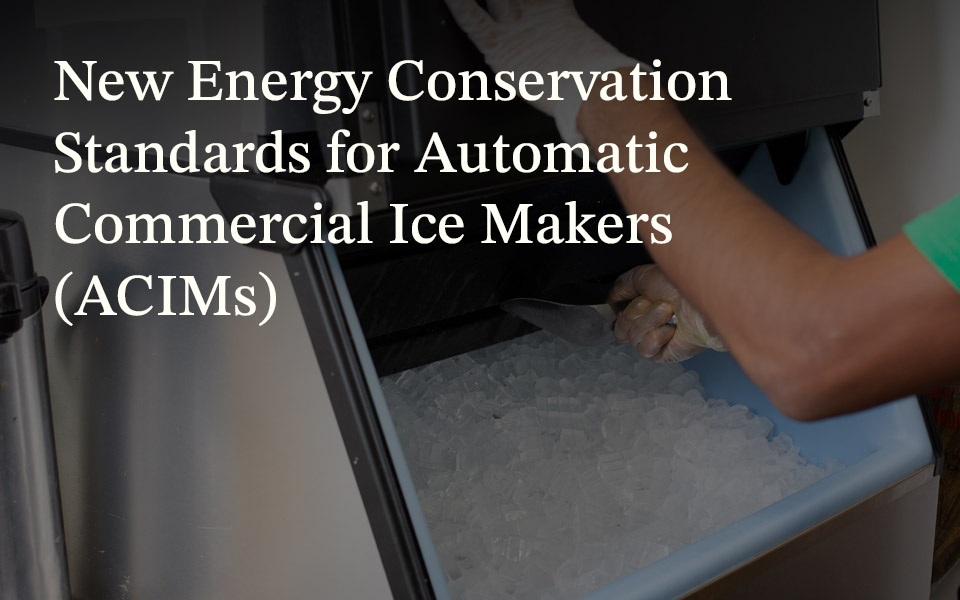I was recently asked to contribute to an ACHR The NEWS article about the uncertainty surrounding the dynamic regulations governing the use of refrigerants. The article provided perspectives from several industry stakeholders, and I was happy to discuss Emerson’s views on the short- and long-term implications of the situation. Read a summary of the article below and view it here in its entirety.

For the last two years, the commercial refrigeration industry has been in a period of uncertainty regarding the regulations that govern the use of hydrofluorocarbon (HFC) refrigerants with high global warming potential (GWP). Since the U.S. DC Court of Appeals ruled that the Environmental Protection Agency (EPA) did not have the authority to phase down HFCs, the EPA’s role in the national HFC phase-down has been unclear.
R-22 phase-out is still in effect
For the time being, the EPA’s authority covers only the transition from ozone-depleting substances, such as the chlorofluorocarbon (CFC) R-22. So, even though the HFC rules have been vacated, the EPA still has the authority to phase out R-22, which is scheduled to take place on Jan. 1, 2020.
While there’s plenty of discussion about the fate of HFCs, it would be unwise to presume that the 2020 R-22 phase-out won’t have significant impacts. In fact, it may surprise some to learn that there are still many operators with older refrigeration systems currently charged with R-22. But after Jan. 1, they must either retrofit their systems with lower-GWP refrigerants or continue to recover and reuse R-22 until their supplies run out — with the understanding that the latter choice is not a permanent solution.
HFC phase-down continues in California and other states
The absence of a federal mandate to phase down common HFCs is not deterring California from taking its own steps. Per a recent ruling by the California Air Resources Board (CARB), R-404A and R-507A are no longer allowable in many new commercial refrigeration applications.
California’s regulatory stance is a reminder that a retailer’s geographic location is an important factor in the development of their refrigerant strategy. While California is currently taking the lead on U.S. HFC reductions, there are currently
As retailers evaluate their future refrigerant options, state-specific environmental regulations will factor prominently in their decision processes. For example, operators in California are well aware of the efforts to phase down HFCs and most likely have alternative refrigerant plans in place. These operators are either planning for retrofits or trialing new alternative refrigerant architectures.
Strategies for moving forward
Fortunately for operators, component and equipment manufacturers have continued developing solutions that feature a wide range of lower-GWP refrigerant alternatives. These solutions are helping retailers align their sustainability objectives with their refrigeration architectures, and include the following strategies:
-
- Retrofit using lower-GWP HFOs —Moving from R-404A to R-448A or R-449A may require adding compressor cooling and other relatively minor system changes but can help operators preserve their existing system investments. Deploying energy optimization best practices will also help them reduce indirect emissions, which lessens their overall carbon footprint.
- Transition to a new and/or natural refrigerant system— Natural architectures offer maximum carbon footprint reductions and are considered by many as the only true future-proof solutions available today. These systems can be installed in new locations or in parallel with an existing system, allowing the retailer to slowly transition to the natural solution.
Emerson is continuing to develop a variety of alternative refrigerant solutions designed to help operators and equipment manufacturers reduce their carbon footprints. Regardless of the regulations in your specific region, we’re here to support the commercial refrigeration supply chain as it transitions to lower-GWP refrigerant alternatives.

Let the Refrigerant Phase-in Begin
Evaluating next-generation commercial refrigerant alternatives in established and emerging...

Reviewing Proposed Energy Efficiency Standards for Ice Machines
Earlier this year, the Department of Energy (DOE) published a notice of proposed rulemaking (NOPR)...

CO2 as a Refrigerant — Criteria for Choosing Refrigerants
This is post two of CO2 as a Refrigerant, a blog series covering the fundamental considerations...
